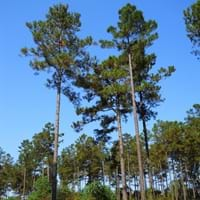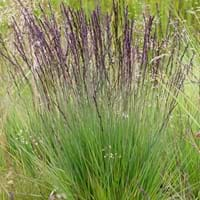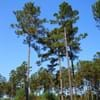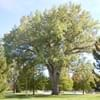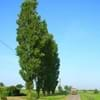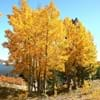Life Span
Perennial
Perennial
Origin
Southeastern United States
Asia, Europe, North Africa
Types
it is a variety of pine
purple moor-grass 'Moorhexe', variegated purple moor-grass
Habitat
Fields
Boggy areas, Dry and Young forest Heaths, Lowland
USDA Hardiness Zone
6-9
4-8
Sunset Zone
H1
1a, 1b, 2a, 2b, 3a, 3b, 4, 5, 6, 7, 8, 9, 14, 15, 16, 17
Habit
Upright/Erect
Clump-Forming
Flower Color
Not Available
Dark Purple
Flower Color Modifier
Bicolor
Bicolor
Fruit Color
Brown
Non Fruiting Plant
Leaf Color in Spring
Green
Green, Dark Green
Leaf Color in Summer
Green
Light Green
Leaf Color in Fall
Green
Green, Yellow green, Gold
Leaf Color in Winter
Green
Tan
Leaf Shape
Needle like
Needle like
Plant Season
Spring, Summer, Fall, Winter
Spring, Summer, Fall, Winter
Sunlight
Full Sun, Partial Sun
Full Sun, Partial Sun
Growth Rate
Very Fast
Medium
Type of Soil
Clay, Loam, Sand
Clay, Loam, Sand
The pH of Soil
Acidic, Neutral
Acidic, Neutral
Soil Drainage
Well drained
Average
Bloom Time
Not Available
Late Spring, Summer, Late Summer, Early Fall, Fall
Tolerances
Drought
Not Available
Where to Plant?
Ground
Ground, Pot
How to Plant?
Seedlings, Transplanting
Divison, Transplanting, Vegetative Reproduction
Plant Maintenance
Medium
Low
Watering Requirements
Do not let dry out between waterings, Requires a lot of watering
Requires regular watering, Water more frequently during periods of extreme drought
In Summer
Lots of watering
Lots of watering
In Spring
Ample Water
Moderate
In Winter
Lots of watering
Average Water
Soil pH
Acidic, Neutral
Acidic, Neutral
Soil Type
Clay, Loam, Sand
Clay, Loam, Sand
Soil Drainage Capacity
Well drained
Average
Sun Exposure
Full Sun, Partial Sun
Full Sun, Partial Sun
Pruning
Prune to stimulate growth
Prune in winter, Remove damaged leaves, Remove dead branches, Remove dead leaves
Fertilizers
All-Purpose Liquid Fertilizer, Apply 10-10-10 amount, High-phosphorous fertilizers used, organic fertlizers
No need to fertilize every year
Pests and Diseases
Bark beetles, Beetles, Black root rot, Root rot
Pests and diseases free
Plant Tolerance
Drought
Not Available
Flower Petal Number
Not Available
Single
Fragrant Bark/Stem
Yes
No
Foliage Texture
Fine
Fine
Foliage Sheen
Matte
Matte
Attracts
Birds
Not Available
Allergy
Asthma, Skin rash
Not Available
Aesthetic Uses
Showy Purposes
Showy Purposes, Water gardening
Beauty Benefits
Not Available
Not Available
Environmental Uses
Air purification
No fertilizer, pesticides, or herbicides needed
Medicinal Uses
No Medicinal Use
No Medicinal Use
Part of Plant Used
Stem
Whole plant
Other Uses
used for making roof trusses, poles, joists, piles, Wood is used for making furniture
Used as Ornamental plant
Used As Indoor Plant
No
No
Used As Outdoor Plant
Yes
Yes
Garden Design
Shade Trees, Street Trees
Container, Foundation, Mixed Border
Botanical Name
PINUS taeda
Molinia caerulea
Common Name
Loblolly Pine
purple moor-grass
In Hindi
loblolly pine
बैंगनी दलदल घास
In German
Weihrauchkiefer
Pfeifengras
In French
pin à encens
pourpre lande-grass
In Spanish
pino taeda
púrpura amarra-hierba
In Greek
loblolly πεύκο
μωβ Moor-γρασίδι
In Portuguese
Pinus taeda
purple moor-grass
In Polish
Loblolly sosna
fioletowy Moor-trawa
In Latin
pinea taeda
Maurus herba-purpura,
Phylum
Coniferophyta
Magnoliophyta
Class
Pinopsida
Liliopsida
Clade
Not Available
Angiosperms, Commelinids, Monocots
Tribe
Not Available
Not Available
Subfamily
Not Available
Not Available
Number of Species
Not Available
Not Available
Difference Between Loblolly Pine and Molinia Caerulea
If you are confused whether Loblolly Pine or Molinia Caerulea are same, here are some features about those plants to help you choose better. Many people think that these two plants have the same characteristics, but one can see Loblolly Pine and Molinia Caerulea Information and learn more about it. Fertilizers required for proper growth of Loblolly Pine are All-Purpose Liquid Fertilizer, Apply 10-10-10 amount, High-phosphorous fertilizers used and organic fertlizers, whereas for Molinia Caerulea fertilizers required are No need to fertilize every year. Hence, one should know the basic difference between Loblolly Pine and Molinia Caerulea if you are planning to have them in your garden to enhance its beauty.
<
Flowering PlantsImportance of Loblolly Pine and Molinia Caerulea
Want to have the most appropriate plant for your garden? You might want to know the importance of Loblolly Pine and Molinia Caerulea. Basically, these two plants vary in many aspects. Compare Loblolly Pine and Molinia Caerulea as they differ in many characteristics such as their life, care, benefits, facts, etc. Every gardener must at least have the slightest clue about the plants he wants to plant in his garden. Compare their benefits, which differ in many ways like facts and uses. The medicinal use of Loblolly Pine is No Medicinal Use whereas of Molinia Caerulea is No Medicinal Use. Loblolly Pine has beauty benefits as follows: Not Available while Molinia Caerulea has beauty benefits as follows: Not Available.
Compare Facts of Loblolly Pine vs Molinia Caerulea
How to choose the best garden plant for your garden depending upon its facts? Here garden plant comparison will help you to solve this query. Compare the facts of Loblolly Pine vs Molinia Caerulea and know which one to choose. As garden plants have benefits and other uses, allergy is also a major drawback of plants for some people. Allergic reactions of Loblolly Pine are Asthma and Skin rash whereas of Molinia Caerulea have Not Available respectively. Having a fruit bearing plant in your garden can be a plus point of your garden. Loblolly Pine has showy fruits and Molinia Caerulea has showy fruits. Also Loblolly Pine is not flowering and Molinia Caerulea is not flowering . You can compare Loblolly Pine and Molinia Caerulea facts and facts of other plants too.
